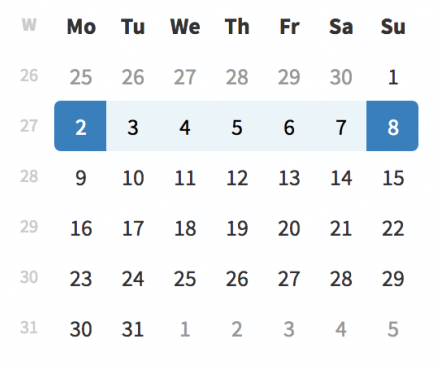A Comprehensive Guide to IT Reskilling
How to start?
You need to be informed to an insane level. Technology is redefining many professions, but to quote a movie that changed the perspective on a generation in IT “This business is binary. You are a one or a zero. Alive or dead. There is no second place”. Forget about just going with the flow and letting others do the heavy lifting. In this tech world, you’re not here to participate; you’re here to dominate. And sometimes, being the very best means tossing aside the tool you’ve cherished for decades, starting from square one with a brand-new one, and aiming for gold once again. It’s like deciding to become a chef and realizing, on the day of the opening, that the entire kitchen was rebuilt and you only know where the microwave is because it is about to explode.
Ask people who studied programming for 3 years what languages from school they use on the job. Spoiler alert: probably none. Still, they learned how to think, how to organize ideas into machine-like commands, and they can turn concepts into working applications. The mental shift was done, and they are ready to build the human-machine bridge in any material.
I get it. You have trained for a different career, but not everything that you have learned goes to waste. Probably it is more about soft skills and study methods than logic itself, but it is still valid. And you learned to know yourself. Know you know who you are and if you have what it takes to redo it again, and for the rest of your life. Do you have what it takes to ride the tech wave? Are you ready to redo it all and become the lifelong maestro of ones and zeros?
In that case, here is a checklist to help you getting started:
Self-Assessment and Goal Setting: Assess your skills, interests, and ponder the deep mysteries of your career goals. You may not find immediately the IT realm that aligns with your secret superpowers, but you will have an idea of what doesn’t make sense. Then, set goals. It can be classes to watch every day, or number of exercises to complete. If you fail, readjust and repeat until you get some results.
Research and Choose a Specialization: IT already has numerous specializations and new ones are created every day. Research the various domains within IT and choose one that aligns with your goals. Consider factors such as job market demand, your personal interests, and the skills required in your chosen specialization. Popular IT specializations include programming, cloud computing, cybersecurity, data analytics,augmented reality and, the new trend, artificial intelligence. All of those will have specific branches, but don’t worry too much for now.
Acquire Essential IT Skills: Depending on your chosen specialization, identify the key skills required in the industry. You can dig into online reputable learning platforms, such as Coursera, Udemy, edX, or even LinkedIn Learning, to acquire foundational knowledge. Always focus harder on your main area but keep building skills in a few other fields. The competition has years of practice, no time to slack! I haven’t mentioned Youtube because there you may have to filter out junk, but there are many complete and free courses on Youtube that you can also follow.
Get Certified: Some people have the time and money to start again and go to college. Getting an approved program and mentors, and clear objectives is the easy way. Others go to bootcamps where in a few months they get a condensed experience with the fundamentals. Either way, always look for an official proof of what you did. In IT, sometimes a cheap certification can mean more than a fancy diploma.
Hands-On Experience: Practical experience is invaluable in IT. Apply your knowledge by working on real-world projects. This hands-on experience not only enhances your skills but also provides tangible evidence of your abilities to potential employers. Contribute to open-source projects, participate in hackathons, or build your portfolio of projects on platforms like GitHub. You can’t leave home without explorer eyes: every business and situation must activate a special creativity area of your brain that says “I could do an app for that”. And then do it. You either become better at doing stuff or you will spend more time indoors.
Networking and Professional Development: Join IT communities, attend meetups, and connect with professionals in your chosen field. Networking can open doors to opportunities, mentorship, and valuable insights. Engage in continuous learning by staying updated on industry trends, attending conferences, and participating in webinars or workshops. Don’t forget that people will help you, but first you need to prove that you are willing to take that step and work on your own. No one will carry you.
Build a Strong Online Presence: Create a professional online presence through platforms like LinkedIn and the communities you want to be a part of. Showcase your skills, projects, and certifications on your profile. Actively participate in relevant discussions, share insights, and connect with relevant professionals in your chosen field. A robust online presence will make you more visible to potential employers and collaborators. Be a name on their mind when an opportunity comes around.
Prepare a Targeted Resume: Tailor your resume to highlight the skills and experiences relevant to your chosen IT specialization. You may need to drop most of what you already did and start with a blank page. Emphasize your achievements and contributions in previous roles, even if they are not directly related to IT. Don’t detail too much as some area specific terms will confuse the outsiders. Best practices say to use action verbs and quantify your accomplishments where possible, but personally I don’t do it much. That can mean a machine won’t like my profile, but I’m not applying to work for a machine.
Job Search and Application: Check job boards, company websites, and networking connections regularly to explore job opportunities. Craft personalized cover letters for each application, emphasizing how your skills and experiences align with the specific requirements of the job. Be persistent, and don’t be discouraged by rejections (there will be many). Continuous improvement and learning from the application process are crucial. If the interviewer takes time to explain why you were rejected, thank them, take notes, improve on that, and apply again. They liked you enough to do it and they may be a great place to work.
Prepare for Interviews: Practice common technical interview questions and be ready to demonstrate your problem-solving skills. Not sure what to answer? Ask AI. Showcase your ability to think critically and communicate effectively. Research the company and understand the role you’re applying for. Be prepared to discuss your reskilling journey and how your unique background brings value to the IT role. And be prepared to be criticized and downplayed by people convinced they can guess the future of others.
And… repeat: It will never be over. Be prepared to reinvent yourself every five years.




Post Comment